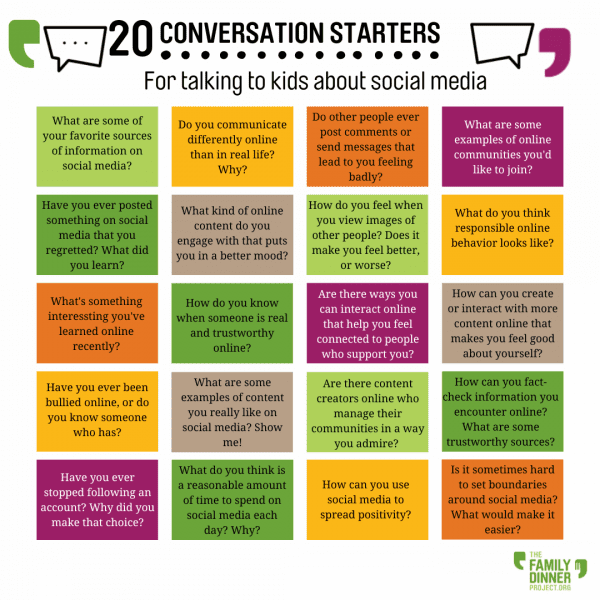
This article was written by Dr. Neha Chaudhary, child and adolescent psychiatrist at Massachusetts General Hospital and Harvard Medical School and Chief Medical Officer of BeMe Health.
Social media has become a point of contention for many parents, while for teens it’s as integrated into their everyday lives as going to school, hanging with friends, or even eating and sleeping.
Most parents of teens and preteens in my child and adolescent psychiatry clinic ask about their child’s social media use. Many wonder what actually happens online, while others wonder whether social media has any benefits or only causes harm. The majority of parents ask about limiting time on social media, and how to get their kids to oblige. What I tell them is this— while limiting the amount of social media time can certainly help, understanding how teens are using social media and together assessing the quality of its use is more likely to lead to more immediate results and changes in your child’s everyday life.
In order to sift through some of the murkiness, here are some of the pros and cons of social media— and how parents can talk to their kids about it in a healthy way.
Need help talking to your teens and tweens, beyond social media? Check out this related article by Drs. Juliana Chen and Tai Katzenstein!
The Downsides of Social Media
Research for years has implicated social media in the worsening of youth mental health. Here are some of the big buckets of phenomena that are to blame:
- Cyberbullying. Whether it’s subtle, snide comments or more overtly mean interactions, cyberbullying has been a significant stressor for many teens, many of whom I end up seeing in clinic. While some teens may say they don’t know “what the big deal is” or that others should “just ignore the comments,” it’s important to recognize that for teens already struggling with conditions like anxiety or depression, that’s easier said than done; the bullying may have even more of an impact on those who are more vulnerable at baseline.
Parents can ask:
Are you being bullied online?
Are people posting comments or sending messages that lead to your feeling badly?
Are you doing this to anyone else?
By checking in on whether cyberbullying is happening, you can help put this phenomenon on your child’s radar, as well as send the message that cyberbullying is not okay. Consider ways for your teen to filter comments or block accounts that engage in bullying activities. - Social comparison. From comparing yourself to others who have seemingly perfect lives to comparing how your body looks versus someone else’s, social comparison has been an ongoing and well-studied phenomenon that has been correlated with anxiety, depression, and poor body image in youth. What’s more, teens are prone to feeling left out based on what they see other peers doing, achieving, or obtaining, and it often affects their ability to stay present in the moment.
Parents can ask:
How do you feel when you look at images of other people? Does it leave you feeling better about yourself, or worse?
Is there a way to view more content that makes you feel good about yourself?
How realistic do you think those images or videos are, anyway?
It can also be helpful to focus on positive affirmations, strengths, and real-life activities that help your child feel grounded in the present.
Worried about your child’s body image? Check out this advice from Dr. Stephanie Harshman on raising kids with positive body image. - Negative or dark content. All content is not created equal. While some content is positive, cheery, and even inspirational, other content can trigger feelings of intense negative emotion in response to being viewed. Teens should think about the quality of the content and start to notice trends in how they feel in response to what they view.
Parents can ask:
How do you feel when you look at some content versus others? Are there types of content that leave you feeling better versus worse?
How might you dial down the negative content while turning up the positive content?
The goal should be to give your child a sense of agency over what they consume. - Lack of rules and oversight. While in-person communities— like schools, households, or community organizations, for example— are full of rules and consequences for breaking those rules, online communities rarely have the same level of oversight. Given the lack of consequences and a level of perceived anonymity, many interactions on social media occur in ways that would not necessarily occur face-to-face as in the latter, societal norms or even feedback from the person in front of you might stop a bad behavior. Learning and thinking about how we can each be a responsible digital citizen is critical to breaking this cycle.
Parents can ask:
What does being a responsible digital citizen mean?
Do you communicate differently online versus in real life? Why do you think that might be?
These questions can help your child reflect on the differences between both types of communities in a healthy way. - Misinformation. The internet is rife with misinformation, and social media is no exception. Any large network through which information can scale also allows for the wrong information to scale, placing all of us — and especially our youth— at risk. Families should teach teens to verify information they consume by doing their own research, or even speaking directly with experts where appropriate— the latter of which is especially important when it comes to medical or health-related information.
Parents can ask:
What’s the source of the information? Are they credible? How do you know?
Is there science to back up this claim?
Is this person who they say they are?
By asking the right questions, parents can model what kids should ask themselves before automatically believing a piece of information that they see or hear.

The Upsides of Social Media
Despite the many risks, there are also many advantages to social media that often get overlooked. If leveraged the right way, social media has the potential to support, connect, teach, and boost spirits. Here’s how:
- Social connection. In a world where technology notoriously divides us, for many it also offers the potential for connection that wasn’t possible before the advent of social media. Many people feel plugged into a community bigger than themselves, finding support, mentorship, and friendship through social media. The benefits of this should not be discounted, especially since social connection is such a healthy part of development for youth.
Parents can ask:
Are there ways that you might use social media to help you feel more connected to others who support you?
Are there groups you are in or would like to join? What do you like about them? - Positive content. While there is plenty of negative and potentially harmful content available online, there’s also lots of potential for positive content to leave you feeling better or to boost your spirits. Whether it’s videos of cute puppies or babies, jokes, inspirational quotes, or someone walking you through a mindfulness exercise, there are some gems available through social media that make for quick mood boosters on-the-fly.
Parents can ask:
What kind of content do you watch, look at, read, or otherwise consume that leaves you feeling in better spirits? Are there other similar accounts you can follow? - Education. Through the boom of large social networks, educational information has also been able to reach the hands and minds of many in a way that was never before possible. We are now able to learn, grow, and appreciate perspectives, new developments, and discoveries at lightning speed. While the potential for harm through misinformation is just as high, with the right vetting of sources and critical evaluation of where the information came from, it is possible to benefit from the richness of available education on social media.
Parents can ask:
What types of things have you recently learned from social media?
What are your favorite sources of information?
The Bottom Line
The main rule of thumb that I’d encourage families to use is to actively work to minimize the downside, maximize the upside, and make a concrete plan for change where change is needed. Think of it as a dial— with critical thinking and awareness of what types of phenomena are harmful, what types of content are negative, or what types of interactions make you feel badly instead of good—you can actively dial down on the identified negatives and instead, consume more content that leaves you feeling good.
Need more help? Try this big list of questions to ask kids about social media!

